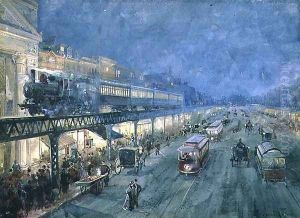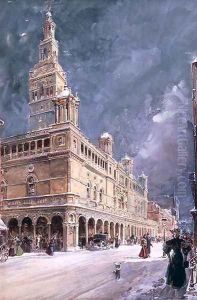William Louis Jnr. Sonntag Paintings
William Louis Sonntag Jnr. was an esteemed American landscape painter, born in East Liberty, Pennsylvania in 1822. Sonntag embodied the spirit of the 19th-century American art movement, particularly known for his romantic and often sublime depictions of the American landscape. His works are characterized by their detailed and idealized views of nature, reflecting the broader Romantic emphasis on emotion and the natural world's inherent beauty and power.
Sonntag's early life is somewhat obscure, but it is known that he moved to Cincinnati, Ohio, in his youth, a city that was emerging as a significant cultural center in the West. There, he received his initial artistic training and was exposed to the thriving artistic community. Cincinnati's vibrant landscape and its position along the Ohio River provided ample inspiration for Sonntag's developing aesthetic. By the mid-19th century, he had established himself as a prominent member of the Cincinnati art scene.
In pursuit of further artistic development, Sonntag traveled to Europe in the 1850s, a common practice among American artists of the time who sought inspiration and training abroad. During his time in Europe, he studied the works of the old masters and was particularly influenced by the romantic landscapes of the Hudson River School, a group of American painters led by Thomas Cole. Sonntag's style, however, remained uniquely his own, blending European influences with his deep appreciation for the American landscape.
Upon returning to the United States, Sonntag settled in New York City, where he became associated with the National Academy of Design. His works were widely exhibited and received considerable acclaim during his lifetime, earning him a place among the era's most respected landscape painters. Sonntag's paintings often depict serene and majestic scenes that evoke a sense of awe and tranquility, capturing the vastness and beauty of the American wilderness with a poetic and almost spiritual quality.
William Louis Sonntag Jnr. continued to paint and exhibit his work throughout the latter half of the 19th century, contributing significantly to the development of American landscape painting. He passed away in 1900, leaving behind a legacy that has continued to influence artists and captivate art lovers. His works are held in numerous public and private collections, serving as enduring reminders of the American landscape's majesty and the profound impact of the Romantic movement in American art.

